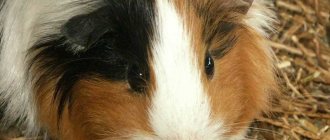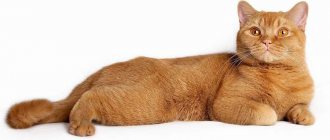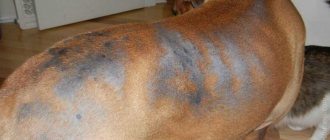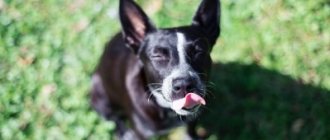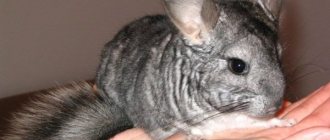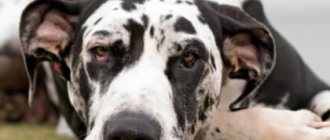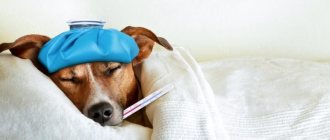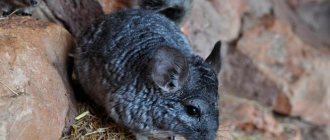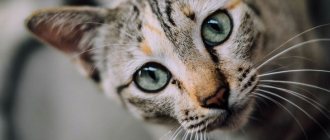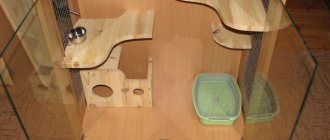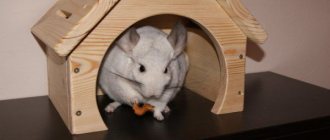Causes of hair loss
Usually keeping a chinchilla does not cause any trouble for the owner. The animals are clean, neat, have a funny and very cute appearance, and with good care they have no odor.
Another plus is the almost complete absence of any wool in the house. This is why many people think that chinchillas do not shed at all.
However, the process of fur renewal in animals is constant. Under normal conditions, no more than twenty hairs fall out per day, which makes molting invisible. If you do not clean the cage for several days, these hairs can be seen on the bedding or among the hay.
Chinchillas also shed during the transition from baby to adult fur. This is a juvenile molt. The most abundant for a healthy animal. But there are a number of reasons that can cause serious problems with the animal’s coat.
These include:
- Stress,
- Dermatitis,
- Poor nutrition
- Avitaminosis,
- Improper conditions of detention,
- Insufficient attention.
Why does a chinchilla lose hair and shed hair?
If you notice that your chinchilla is shedding a lot of hair, this may be a cause for concern.
Keeping these animals at home creates a minimum of problems for their owners. The most important thing is to properly prepare for the arrival of this cute and charming pet. You need to buy and equip a cage, stock up on food and treats, purchase a bathing suit and zeolite dust for it. Unlike dogs, chinchillas do not need to be walked.
There is no need to find a place for a litter box, as is the case with a cat or ferret. By keeping the cage clean, your guests will never guess that you have an animal at home - that is, if we talk about the specific smell. With good care, chinchillas do not smell.
And, of course, there is no need to constantly clean the fur of a shedding animal from the carpet or clothing.
Do chinchillas shed? It is believed not. In reality this is not entirely true.
- Firstly, there is the so-called juvenile molt. This is when the cub changes into an adult fur coat.
- And secondly, in nature and under normal conditions at home, chinchilla fur changes almost constantly.
But she sheds 20-30 hairs a day, which is almost unnoticeable. Moreover, this does not affect the fur of the animal, especially considering the thickness of the fur.
If your chinchilla is shedding, it is worth knowing what could be causing this phenomenon. The reasons for hair loss can be:
- stress,
- hypovitaminosis or vitamin deficiency,
- dermatitis.
Lack of vitamins
If you use high-quality pelleted food, problems with hypovitaminosis should not arise. Almost all manufacturers claim the presence of vitamin premixes in the granulate.
A lack of vitamins leads to various pathologies, some of which may include molting.
If you notice signs of shedding in your animal, try feeding him Multitabs or Ascorutin for several days in a row.
These solutions should be given one or two drops once a day for two weeks. The solution is dripped onto bread or other dry treats and the animals eat it with pleasure.
It is worth noting that you should not overdo it with giving vitamins to your animal. In contrast to hypovitaminosis (lack of vitamin in the body), there is a disease called hypervitaminosis (excess of vitamin), which is no less fraught with consequences for the health of the animal.
Stress
Most often, a chinchilla's hair falls out as a result of a stressful situation. Like many rodents, they are very sensitive to change, moving, new people, objects, and even the appearance or death of other pets. When stressed, fur usually falls out in clumps, profusely and can lead to the rapid appearance of bald patches. The solution to this problem is very simple - a calm environment, more attention and affection, calm speech and more favorite treats. Most often, this is enough and after a few days the hair loss stops.
Allergy
If the body is hypersensitive to various irritants, the following symptoms can be observed in an animal:
- conjunctivitis;
- inflammation of the eyelids;
- lacrimation;
- sneezing;
- dyspnea.
An allergic reaction accompanies the following situations:
- switching from one type of feed to another, this applies to both ready-made mixtures and those prepared by the owner (dusty hay);
- bedding materials;
- hygienic sand for bathing chinchillas;
- an allergic reaction to toxic substances released by internal parasites.
Conjunctivitis in chinchillas
Avitaminosis
Shedding, which begins in early spring or with the onset of winter, can also be caused by vitamin deficiency. It is during this period that a lack of vitamins usually appears, caused by a reduction in succulent food in the animal’s diet. With vitamin deficiency, the hair may fall out in clumps, leaving noticeable bald patches. Sometimes the skin in bald areas turns red and starts to itch. What to do if the animal has vitamin deficiency? Add vitamins to your diet, as well as more fruits and fresh vegetables, if possible.
The most common vitamins for chinchillas are Ascorutin, Supradin Kinder Gel for children or Multitabs.
It is recommended to give one drop once a day for 12-14 days. When adding vitamins, you should remember to be careful and not exceed the recommended duration. An excess of vitamins can cause hypervitaminosis, which is also accompanied by unpleasant symptoms - baldness, problems with digestion and breathing.
Temperature violation
Why does a chinchilla shed in the spring? What to do in this case? The most likely reason may be a change in the temperature in the room. The closer it gets to summer, the warmer it is in the apartment. If the room is more than 23°C, the animal feels uncomfortable and, in order to cool down a little, sheds its thick and warm fur.
The optimal temperature for chinchillas is from 16 to 18°C. If the room temperature is much higher, the animal may become too hot: it will lose its fur, its skin will become covered with red spots and begin to peel off.
To achieve a beautiful and thick coat for your pet, it is worth maintaining the temperature in the optimal mode (from 16 to 18°C). In summer, the room should be cooled with air conditioning and ventilated. However, you should be careful here, because under a direct flow of cold air your pet can catch a cold. In winter, you should not place the cage near heaters or radiators to avoid overheating.
Dermatitis
Another reason why animals' fur comes out in clumps is dermatitis. These include skin diseases accompanied by severe itching, inflammatory processes and profuse hair loss. Chinchillas, which naturally have good immunity, very rarely suffer from dermatitis.
Allergy
Among all the known ones, the most common is allergic dermatitis caused by a change in food or bedding, accessories or sand for bathing. Allergic dermatitis manifests itself not only in itching and rapid hair loss, but also in redness of the eyes, frequent sneezing, hoarseness and heavy breathing. Coping with allergies is simple - exclude the animal’s contact with the allergen. Rinse the cage, refuse food (if that is the problem), replace the bedding and change the toys.
Fungal infections
In addition to allergic dermatitis, animals are susceptible to small fungi that cause:
- Trichophytosis,
- Microscopy.
The more common name for these diseases is lichen. Both diseases have very similar symptoms - the appearance of well-defined and slightly raised areas of skin, often oval or round, covered with dry scales or blisters. The hair around the affected areas quickly falls out and if treatment is not taken, the chinchilla can become completely bald in a very short time. When diagnosing lichen, it is worth remembering that the disease can be transmitted to humans and is highly contagious. Treatment includes the use of a number of measures, and depending on the extent of the damage, injections, ointments, sprays or tablets are used.
For external treatment of affected skin areas, use:
- Lamisil,
- Exoderil,
- Clotrimazole,
- Nystatin,
- Medical sulfur,
- Chlorhexidine.
In the initial stages, only external treatment is sufficient. For more serious damage, it is necessary to add Nizoral tablets to the treatment. The animal is given 1/14 of a tablet per day, and the course of treatment is a month. A good analogue to tablets is the Vakderm F vaccine. Give 0.3 or 0.5 ml per day with an interval of 10 days, two or three times. A normal reaction is a sharp increase in bald spots after the injection.
Diseases
Any disease affects the appearance of the animal - the fur gets wet, the hairs become brittle and fall out profusely. If such symptoms appear simultaneously with discharge from the eyes, ears, mouth, nose, etc., this is a reason for a careful examination and identification of the disease. Most often the gastrointestinal tract suffers from:
- Diarrhea. The reason is overexcitement, bad water or moldy food. Treat with herbal infusions (calamus, wild rosemary) and phthasol with charcoal. If treatment is unsuccessful, biomycin or tetracycline is given (the dosage is determined by the veterinarian).
- Constipation. The reason is infection, lack of water, stress. If the abdomen is hard and there are no signs of bowel movements, a laxative, plenty of fluids and juicy fruits should be given.
- Gastroenteritis. The intestines and stomach are inflamed due to poor nutrition or a sudden change in nutrition. Treat with rosehip decoction and a balanced meal.
The animal will have bad fur and will stop moving due to diseases of the genital organs, mammary glands, malocclusion, bad teeth, jaundice, and cystitis. Only a professional can handle such serious diseases.
A chinchilla can gnaw its own fur.
Content errors
Poor nutrition
Hair can fall out in clumps throughout the year as a result of improper and unbalanced nutrition. This is most often observed in animals that eat only one type of food. Breeders mistakenly assume that expensive and high-quality granulated food can replace all natural food and provide the pet with all the vitamins and minerals. As a result, the animal may have a deficiency of one or more vitamins and an excess of other elements. If hair loss is caused by improper feeding, you should gradually change your diet.
A sudden change will lead to stress and digestive problems!
The animal should be given more dried leaves of fruit trees, berries and fruits, pure vegetables and fresh herbs.
Incorrect content
One of the most important factors when keeping chinchillas is temperature. Animals cannot tolerate heat and elevated temperatures, stuffiness, and high humidity. The most comfortable temperature for babies is +15 +20 degrees, and the critical temperature is +25 +27. If the critical temperature remains in the room for several days, the animal may begin to go bald, the fur will fall out in clumps, and the skin on the bald areas will become dry and reddened. It is easier to prevent a problem than to solve it. It is not recommended to place the cage next to heaters or radiators, or on a window in direct sunlight. Chinchillas tolerate cold temperatures much easier, so even if the room is below +15 in winter, you should not turn on the heating devices. A little colder weather won't do any harm. If the animals are kept in a climate where hot summers are the norm, then care should be taken to have a fan or air conditioner in the room where the cage is located.
Why does a chinchilla shed and lose its fur?
Many pet owners get seriously upset when their chinchilla's hair falls out. It's often scary, but it's usually a completely natural process. It is important to be able to distinguish the process of normal molting from the symptoms of dangerous diseases in your pet.
Why does a chinchilla shed?
Like most other animals, chinchillas shed to freshen up their coat. This is similar to how a person sheds dead skin cells. Shedding chinchillas is a way for them to refresh and maintain a healthy coat.
Washing your pet is strictly not recommended, because this is almost the only way for him to cleanse himself without unnecessary stress. If your chinchilla is hairless because she constantly sheds her fur, it means that you are handling her too roughly. Don't grab it by the tail, don't try to catch it.
Let your communication be more relaxed, then you will definitely make friends.
chinchilla shedding
Chinchillas also shed to control their temperature. It is difficult for them to regulate their body temperature, but it is vital. Heat can lead to serious health problems.
So in the warm season they need to shed excess fur to prevent overheating. During the spring and summer, you may notice that your chinchilla is losing more hair than usual.
This is a natural process that keeps them healthy.
Owners of exotic rodents often wonder whether chinchillas shed as a result of age-related changes. It is impossible to give an exact answer to this question, since everything is quite individual. Rather, on the contrary, the animal stops molting due to disturbances in heat exchange, which at a young age works “like a clock.”
It is also important to find out whether chinchillas kept at home shed from this or that type of food. In fact, hair loss is usually caused by a lack of vitamins. The animal should receive only balanced nutrition; skimping on the quality of food for a chinchilla can cost it health or even life.
How does the molting process work?
Chinchillas can shed at intervals of several weeks. The process of shedding their fur starts from their head and moves towards the tail. New fur begins to grow and pushes out the old one.
During this process, you can notice a clear line on the fur. This line, known as the primer line, is the area where the fur coat is currently being renewed. The line will gradually move down the entire body until the coat is completely renewed. The animal wears a new coat for several weeks before it is time to begin the molting process again.
The process occurs all year round, however it can be noted that animals shed more fur in the summer or spring to keep cool than in the winter months.
Shedding fur
Shedding fur should not be confused with the natural process of shedding.
A chinchilla should shed slowly and regularly. Therefore, if a chinchilla is completely bald, perhaps something has frightened it very much.
Rapid fur release is a defense mechanism used when a chinchilla feels trapped or threatened. Animals often use this in the wild, for example if a chinchilla is caught by a predator. But pet chinchillas can also shed fur if they are in a stressful situation.
Shedding fur is also a natural process and should not cause much concern to pet owners. If your hairless chinchilla is feeling normal, carefully inspect all exposed areas of his skin. You don't need to go to the vet or treat the bare skin area unless it starts to look painful.
Danger of hair loss
Hair loss is a natural process. This is harmless and even necessary, because it is this process that keeps the chinchilla healthy. But there are several problems and features associated with hair loss that every chinchilla owner should be aware of:
- If an animal loses too much of its fur, it may be tempted to eat or lick the excess fur. If an animal consumes too much of this fur, it may experience digestive problems or intestinal obstruction. So make sure to clean the cage regularly to remove excess fur.
- Excess fur sometimes gets stuck in your pet's coat. This fur can lead to many problems with the animal's skin.
These are the 2 most serious problems that can lead to the development of health problems in a chinchilla.
Lack of attention
Another reason for the appearance of bald patches and hair falling out in clumps is gnawing out the fur. This reason cannot be attributed to molting, since baldness is caused by mechanical damage. However, gnawing out fur is a fairly common occurrence in animals that are not given enough attention or that are kept in cramped and small cages. The emergence of a bad habit is caused by ordinary boredom.
And the fur of the animal very often looks as if tufts of wool were pulled out of the skin. It is quite easy to cope with this problem - pay more attention to your pet, move the animal into a more spacious cage, install new toys or labyrinths, or buy a pair.
